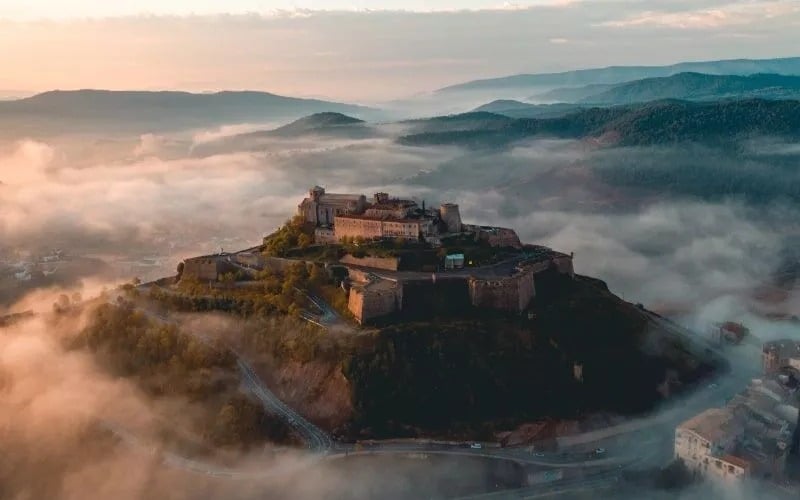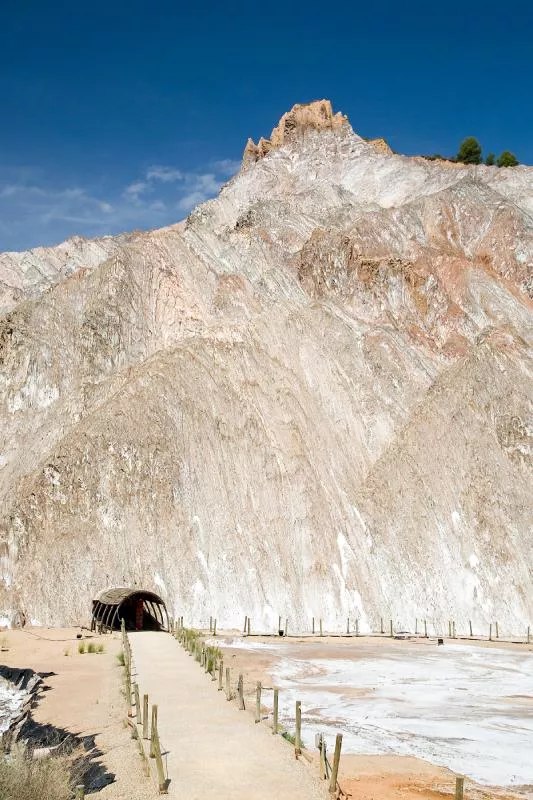
Located at the foot of the Sierra de las Garrigues, south of the beautiful Catalan municipality of Cardona, emerges a strange mountain stained with mother-of-pearl and clay. It is the Salt Mountain, a diapir, a complex geological formation that the Energy Glossary defines as “A relatively mobile mass that intrudes into preexisting rocks”, this way growing day by day. The glossary adds: “Diapirs commonly intrude vertically through more dense rocks because of buoyancy forces associated with relatively low-density rock types.”

The castle of Cardona, where the Salt Mountain is located. | Shutterstock
It is a process by which a material of low density and high plasticity, such as salt, emerges to the surface after breaking the most compact materials that cover it. A similar example is when, in a puff pastry cake, the cream, which is in the lower layer, breaks the puff pastry and comes outside.
That is why the mountain of salt grows, a process that is intensified with the erosion of rains, when the water wears away the layers of the surface, increasing the emerging of subsoil salts. According to Turismo de Cardona, this geological formation “is unique in the world and even today it grows as the rain erodes it”.
Today the Salt Mountain of Cardona is a cultural park whose underground galleries can be accessed from below. However, not long ago the place operated like a mine. But it was not like any other mine. The Nieves de Cardona Mine, in force between 1929 and 1990, was one of the most important potassium salt mines in the world.

The Salt Mountain. | Shutterstock
But let’s go even further back, because, as writer and history enthusiast Francisco Javier Tostado wrote on his blog, “there are vestiges of the extraction of rock salt in the open air in this mountain for more than 6000 years, there are documents of its exploitation in Roman times”. In the Middle Ages, as claimed by the same author, “Cardona became the most important production centre of the Iberian Peninsula, leaving from the port of Barcelona to all of Europe.”
The presence of gunpowder in the 18th century and the discovery of potassium salt inside the mine put an end to open-air mining. It is also worth mentioning the poor conditions that employees had to face during part of the history of the mines, including the death of dozens of workers.

‘Sistine Chapel’ of the Salt Mountain. | Shutterstock
After they put an end to mining activities, the place was transformed into what we know today: the Salt Mountain Cultural Park of Cardona (originally in Spanish: Parque Cultural de la Montaña de Sal de Cardona). The visitors can walk through the underground galleries of the Salt Mountain, which extends for two kilometres, although only 86 meters are open to the public.
Along the way, stalactites, stalagmites and a wide variety of shapes and colors are beautifully displayed in the room called ‘the Sistine Chapel’. In addition, the visitor will have the chance to look at the old mining facilities: extraction wells, machinery and a museum that gives account of the importance of the Salt Mountain.